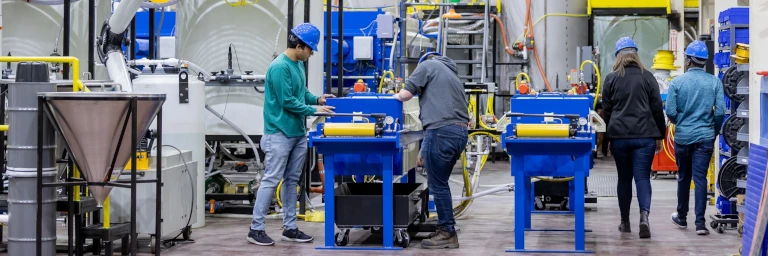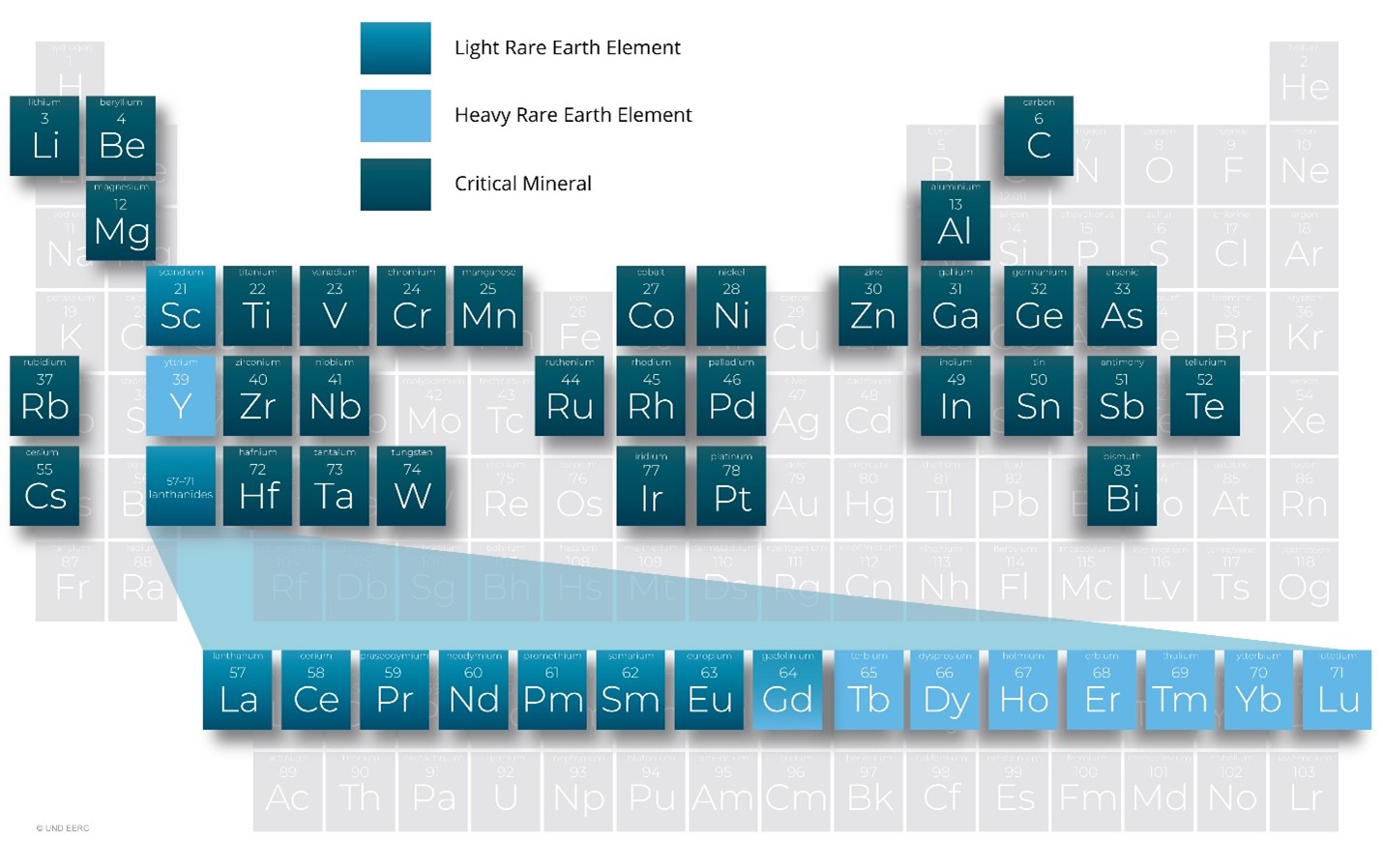
Critical Minerals & Rare Earth Elements
The building blocks of modern life.
Modern society is not sustainable without reliable supplies of critical minerals (CMs).
Think of the technology that allows you to read these words from a flat-screen monitor, a tablet, or a smartphone—or clean energy technologies such as electric vehicles, wind turbines, and solar panels. Don’t forget about the technologies used to help with our national defense such as missile guidance systems, lasers, radar and sonar. All of these depend on CMs.
What are critical minerals and rare earth elements?
The U.S. Geological Survey currently designates 50 minerals as critical to the U.S. economy, national security, renewable energy development, and infrastructure. CMs are essential for decarbonized or “green” energy infrastructure as well as current manufacturing technologies including:
- The rare earth elements (REEs), used in offshore wind turbine generators and electric vehicle motors.
- Battery metals such as lithium, cobalt, nickel and magnesium are used in energy storage technologies.
- Platinum group metals used in catalysts for automotive, chemical, fuel cell, and green hydrogen products.
- Gallium and germanium, used in semiconductors in electronic devices.
- Carbon, used to manufacture nonfuel carbon products, such as graphite used in lithium-ion batteries and electrodes for steel making.
Often referred to as the “technology metals,” REEs are a type of metallic critical mineral that include 15 lanthanide metals located at the bottom of the periodic table plus scandium and yttrium (see figure below). Known for their unique physical and chemical properties, this group of raw materials is found in over 200 products ranging in technologies from smartphones and laptops to lasers and medical devices. Additionally, REEs are highly sought after for their magnetic properties, which come in handy when turning movement into energy.
Rare earth magnets are the strongest permanent magnets that we know of and help make electric motors and wind turbines lighter and more efficient. As economies around the world strive to become more carbon neutral, global demand for REEs is expected to double by 2030.
The term ‘rare earth’ element is actually a misnomer, as REEs are relatively abundant in the earth’s crust, with deposits found in almost all countries around the world. However, REEs are not often found in large, concentrated quantities that can be extracted easily or economically, making mining difficult. They are also found together – no single deposit of one REE without the others is known. Additionally, due to their chemical similarity, REEs are very hard to separate from one another, meaning that costs are high for separating and refining REE ores into the pure metals or compounds needed for manufacturing processes.
Worldwide there was an estimated 110 million tons of REE reserves, with China possessing the largest proportion of any country at approximately 40%. China is even farther ahead in terms of total production, at nearly 70% of global mining production in 2023 as shown in the figure top right. However, reserves and mining are only part of the story – China is even more dominant, at 80-90% or more of global capacity, when it comes to processing REEs into pure metals and compounds and into manufactured products such as rare earth magnets.
This one-sided dependency on China by the US and other countries translates to leverage. Since 2006, decisions by the Chinese government to restrict REE exports have resulted in REE price volatility and political influence over other countries like that of Japan in 2010. Suffice to say, rare earths have become an object of geopolitical contention because of how key they are to countries’ technological ambitions and now also to climate change goals. Countries are now taking steps to reduce their reliance on China for REEs, including:
- Developing new REE resources. For example, the U.S. Department of Energy (DOE) is working on developing secondary or unconventional REE resources, such as industrial wastes, that will reduce the need for new mining and allow for economic remediation of waste materials, limiting their environmental impacts.
- Developing advanced separation and refining technologies. REE refining has historically been an environmentally damaging process, but new technologies are being developed and commercialized that are more environmentally sound, more efficient, and less expensive.
- Exploring alternatives. Companies are looking for technologies to replace REEs or use fewer of them. For example, Tesla has announced plans to use rare earths-free magnets in next-generation motors.
- Creating new policies to spur domestic production. For example, the Bipartisan Infrastructure Law and the Inflation Reduction Act contain numerous programs targeting increasing the security of domestic supply chains of CMs.
Percent of Global Production
- United States - 12.2%
- Australia - 5.1%
- Brazil
- Burma - 10.8%
- China - 67.9%
- Russia
- Vietnam
- Other - 4%
Percent of Global Reserves
- United States - 2%
- Australia - 4.9%
- Brazil - 18.2%
- Burma
- China - 38.1%
- Russia - 8.7%
- Vietnam - 19.1%
- Other - 9.5%
UND is already pioneering important research to find ways to extract rare earth elements from our lignite coal in North Dakota.ND Senator John HoevenU.S. Senate Appropriations Committee

